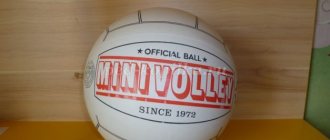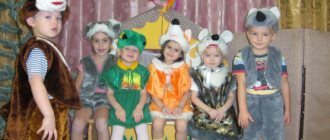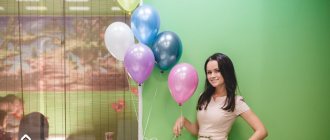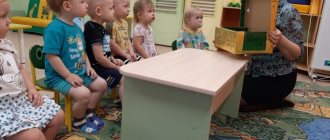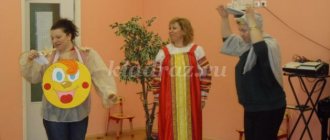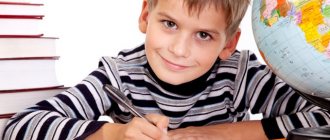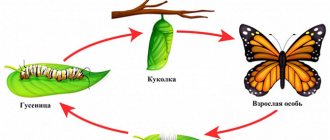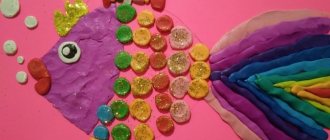Formation of beautiful speech
The problem for many kids is speech. Some people can’t pronounce sounds, some people can’t form sentences, some people have problems with parasitic words. An acting school will also help in all these situations. During lessons, teachers devote enough time to oratory. Children read tongue twisters, learn to breathe correctly, and do articulation exercises. At theater courses for children aged 3–5 years, pupils learn poems - at this age this is a natural need of a child, and do finger exercises to develop fine motor skills (and therefore speech).
Fighting Fears
The fear of public speaking is considered to be one of the most common in the world. Children are also susceptible to it, and the older the child becomes, the more discomfort he may experience while speaking in public. Theater courses for children solve this problem. After just a few lessons, the child becomes more confident in himself, begins to improvise, and opens up. He gains experience and tools for public speaking. And he ceases to be afraid of speaking in front of the public.
Additional program for theater activities in kindergarten
Relevance of the program: One of the important problems common in our society among young people is indifference and lack of interests. They do not leave the computer, playing computer games day and night; they are not interested in anything else. In addition, young people have many complexes. They lack initiative, are not independent, are uncommunicative, constrained, and shy outside the virtual world. To overcome these problems, it is necessary to awaken some kind of interest in children at preschool age, develop independence, sociability, creativity, and help overcome shyness and stiffness. And the most fertile ground for this is the theater. In the theater, a child reveals all his capabilities; he feels not himself, but the hero he plays. Therefore, he loses his shyness, stiffness of movements, and all the complexes he has disappear. Direction of the program: This program is aimed at educating a creative person in the process of theatrical activity, developing his independence, activity, initiative in the process of mastering the skills of theatrical activity, as well as in other types of activities: communicative, artistic-aesthetic, cognitive. Showing your “I” in drawing, folk arts, in creating poems, inventing stories, expressing a stage image, in your vision of some kind of cognitive problem, but at the same time respect for the team, the ability to make compromises are important points this program. Novelty of the program: At preschool age, children are imitative, not independent, creativity is shown only slightly. Children repeat after the teacher and other children a story, a drawing, an image. This program is aimed at developing children's independence in artistic creativity and activity. I want to teach children to come up with their own games, fairy tales, stories, scenarios, and convey the stage image in their own way. Don’t copy someone else’s, but create and fantasize yourself. The program promotes the development of observation skills in children. Only by observing the behavior of animals and people can children understand the real feelings of those observed and convey these feelings to the viewer. This program covers, in addition to theater, other types of activities: educational, artistic and aesthetic, communicative. Children also show creativity in visual arts - they independently choose material for making various types of theaters, depict fairy tale heroes in their own way, conveying in the drawing their attitude towards him, how he imagines, sees this hero, conveys in the drawing episodes of the story invented by him. In communicative activities, children express their own opinions: “I believe,” “I believe.” It is important to teach a child to think, reflect, and not be afraid to express his own opinion, different from the opinions of others. Explanatory note Artistic and aesthetic education occupies one of the leading places in the content of the educational process of a preschool educational institution and is its priority direction. For the aesthetic development of a child’s personality, a variety of artistic activities are of great importance - visual, musical, artistic and speech, etc. An important task of aesthetic education is the formation in children of aesthetic interests, needs, aesthetic taste, as well as creative abilities . Theatrical activities provide a rich field for the aesthetic development of children, as well as the development of their creative abilities. In this regard, additional classes on theatrical activities have been introduced at the preschool educational institution, which are conducted by a teacher of additional education. Theater activities help develop the child’s interests and abilities; contribute to overall development; manifestation of curiosity, desire to learn new things, assimilation of new information and new ways of acting, development of associative thinking; perseverance, determination, manifestation of general intelligence, emotions when playing roles. In addition, theatrical activities require the child to be decisive, systematic in work, and hardworking, which contributes to the formation of strong-willed character traits. The child develops the ability to combine images, intuition, ingenuity and inventiveness, and the ability to improvise. Theatrical activities and frequent performances on stage in front of spectators contribute to the realization of the child’s creative powers and spiritual needs, emancipation and increased self-esteem. Alternating the functions of performer and spectator, which the child constantly takes on, helps him demonstrate to his comrades his position, skills, knowledge, imagination. Exercises for the development of speech, breathing and voice improve the child’s speech apparatus. Performing game tasks in the images of animals and characters from fairy tales helps to better master your body and realize the plastic possibilities of movements. Theatrical games and performances allow children to immerse themselves in the world of fantasy with great interest and ease, and teach them to notice and evaluate their own and others’ mistakes. Children become more relaxed and sociable; they learn to clearly formulate their thoughts and express them publicly, to feel and understand the world around them more subtly. Using the program allows you to stimulate children’s ability to imaginatively and freely perceive the world around them (people, cultural values, nature), which, developing in parallel with traditional rational perception, expands and enriches it. The child begins to feel that logic is not the only way to understand the world, that what is not always clear and ordinary can be beautiful. Having realized that there is no one truth for everyone, the child learns to respect other people’s opinions, be tolerant of different points of view, learns to transform the world, using fantasy, imagination, and communication with people around him. This program describes a training course in theatrical activities for preschool children aged 4-7 years (middle, high and preparatory groups). It was developed on the basis of the mandatory minimum content for theatrical activities for preschool educational institutions, taking into account the updating of content for various programs described in the literature. The goal of the program is to develop children's creative abilities through theatrical art, to develop children's interest in theatrical activities. Objectives • To create conditions for the development of creative activity of children participating in theatrical activities, as well as the gradual development by children of various types of creativity by age group. • Create conditions for joint theatrical activities between children and adults (staging joint performances with the participation of children, parents, preschool employees, organizing performances for older children in front of younger ones, etc.). • Teach children manipulation techniques in puppet theaters of various types. • Improve children's artistic skills in terms of experiencing and embodying the image, as well as their performing skills. • To familiarize children of all age groups with various types of theaters (puppet, drama, musical, children's theater, etc.). • Introduce children to theatrical culture, enrich their theatrical experience: children’s knowledge about the theater, its history, structure, theatrical professions, costumes, attributes, theatrical terminology. • To develop children's interest in theatrical and play activities. Objectives of the circle: 1. To develop intonation expressiveness of speech in children. 2. Develop the ability to sense the character of a literary work. 3. Develop expressiveness of gestures and facial expressions in children. 4. Develop the ability to distinguish between genres: nursery rhyme, fairy tale, story, highlight the positive and negative qualities of characters. 5. Develop the ability to evaluate the actions of heroes, situations, and a sense of humor. 6. Develop children’s ability to take part in dramatizations based on the plots of familiar works of art. 7. Encourage initiative and creativity. 8. Develop the ability to pronounce all sounds cleanly and clearly; coordinate words in sentences. 9. Cultivate a friendly attitude towards each other. Forms of work. 1. Theatrical games.
2. Classes in a theater group. 3. The teacher's stories about the theater. 4. Organization of performances. 5. Conversations and dialogues. 6. Production and repair of attributes and aids for performances. 7. Reading literature. 8. Design of an album about the theater. 9. Show performances. The program is compiled taking into account the implementation of interdisciplinary connections in the following sections: 1. Artistic and aesthetic: “Musical education”, where children learn to hear different emotional states in music and convey them with movements, gestures, facial expressions; listen to the music for the next performance, noting its varied content, which makes it possible to more fully appreciate and understand the character of the hero, his image. “Visual activity”, where children get acquainted with illustrations that are close in content to the plot of the play, learn to draw with different materials based on the plot of the play or its individual characters. “Rhythmics”, where children learn to convey the image of a hero, his character, and mood through dance movements. 2. “Speech development”, in which children develop clear, clear diction, work is being done on the development of the articulatory apparatus using tongue twisters, tongue twisters, and nursery rhymes. 3. “Educational”, where children get acquainted with literary works that will form the basis for the upcoming production of the play and other forms of organizing theatrical activities (classes in theatrical activities, theatrical games in other classes, holidays and entertainment, in everyday life, independent theatrical activities of children). 4. “Social - communicative”, where children get acquainted with the phenomena of social life, objects of the immediate environment, natural phenomena, which will serve as material included in the content of theatrical games and exercises. Interaction with parents and specialists: The work of the circle is more efficient and effective with the participation of specialists from preschool educational institutions: we resort to consultation with a teacher-psychologist to solve social and moral problems in children. Advice from a speech therapist helps improve the speech skills of preschoolers. Other teachers take part in holidays and entertainment in the role of characters. Parents provide assistance in making attributes and costumes for the holidays; participate as characters. Conversations with parents and their participation in the work of the circle help at home to consolidate the knowledge and skills acquired by children in classes and, thereby, achieve the results we want. Expected results: Children master expressive speech skills, rules of behavior, etiquette for communicating with peers and adults. Show interest and desire for theatrical art. They are able to convey various feelings using facial expressions, gestures, and intonation. They independently perform and convey images of fairy-tale characters. Children try to feel confident during performances. The subject-spatial developmental environment of the preschool educational institution was supplemented with different types of theaters, manuals, drawings, and card files of creative games. Close contact has been established with parents. SUGGESTED ABILITIES AND SKILLS 2nd junior group Able to act in a coordinated manner. They know how to relieve tension from individual muscle groups. Remember the given poses. Remember and describe the appearance of any child. Know 5-8 articulation exercises. They know how to exhale long while taking an imperceptible short breath. They can pronounce tongue twisters at different rates. They know how to pronounce tongue twisters with different intonations. They know how to build a simple dialogue. They can make sentences with given words. Middle group They are able to act in a coordinated manner. They know how to relieve tension from individual muscle groups. Remember the given poses. Remember and describe the appearance of any child. Know 5-8 articulation exercises. They know how to exhale long while taking an imperceptible short breath. They can pronounce tongue twisters at different rates. They know how to pronounce tongue twisters with different intonations. They know how to build a simple dialogue. They can make sentences with given words. Senior group Willingness to act in a coordinated manner, engaging simultaneously or sequentially. Be able to relieve tension from individual muscle groups. Remember the given poses. Remember and describe the appearance of any child. Know 5-8 articulation exercises. Be able to exhale long while inhaling imperceptibly, and do not interrupt your breathing in the middle of a sentence. Be able to pronounce tongue twisters at different rates, in a whisper and silently. Be able to pronounce the same phrase or tongue twister with different intonations. Be able to expressively read a dialogical poetic text by heart, pronouncing words correctly and clearly with the necessary intonations. Be able to form sentences with given words. Be able to build a simple dialogue. Be able to write sketches based on fairy tales. Preparatory group Be able to voluntarily tense and relax individual muscle groups. Orientate yourself in space, evenly positioning yourself around the site. Be able to move in a given rhythm, at the teacher’s signal, joining in pairs, threes, fours. Be able to collectively and individually transmit a given rhythm in a circle or chain. Be able to create plastic improvisations to music of a different nature. Be able to remember the mise-en-scène set by the director. Find a justification for a given pose. Perform simple physical actions freely and naturally on stage. Be able to compose an individual or group sketch on a given topic. Master a complex of articulation gymnastics. Be able to change the pitch and strength of the voice according to the teacher’s instructions. Be able to pronounce tongue twisters and poetic texts in motion and in different poses. Be able to pronounce a long phrase or poetic quatrain in one breath. Know and clearly pronounce 8-10 rapid-fire words at different rates. Be able to pronounce the same phrase or tongue twister with different intonations. Be able to read a poetic text by heart, pronouncing the words correctly and placing logical stresses. Be able to build a dialogue with a partner on a given topic. Be able to compose a sentence from 3-4 given words. Be able to choose a rhyme for a given word. Be able to write a story on behalf of the hero. Be able to compose a dialogue between fairy-tale characters. Know by heart 7-10 poems by Russian and foreign authors. Contents of the program. The content of the program includes eight main blocks presented in the table.
Let's list them. Block 1 – basics of puppeteering. Block 2 - basics of puppet theater. Unit 3 – basics of acting. Unit 4 – basic principles of dramatization. Block 5 – independent theatrical activity. Block 6 – theatrical ABC. Block 7 – holding holidays. Block 8 – leisure and entertainment. It should be noted that blocks 1, 5, 8 are implemented in one to two lessons per month; block 2 is implemented in two classes per month; blocks 3, 4 – in each lesson; block 6 – in thematic classes 2 times a year (three classes in October and March); block 1 is sold once a quarter. Download the program for theater activities in kindergarten
We recommend watching:
Theatrical activities in kindergarten Theater in the second junior group Do-it-yourself hat. Master class with step-by-step photos Script of a theatrical performance for children with disabilities (CP)
Similar articles:
Dramatization of Chukovsky's fairy tale The Fly Tsokotukha for children 5-7 years old
Dramatization of a fairy tale in the senior group “About the Little Mouse”
Theater performance in the senior group. Fox-sister and gray wolf
Theater quiz for the senior group
Game performance in kindergarten. Middle - senior group
Intellectual and emotional development
Theater studio for a child from 5 years old involves broadening his horizons. As children grow older, classes in world music, literature, and cinematography are added. Children get acquainted with great works of art, memorize excerpts from stories and plays.
Later, in primary school and adolescence, children will experience the moods and characters of literary heroes during rehearsals and performances. Preschoolers are asked to simply name the emotions of the characters in poems and fairy tales, and also to depict them in short scenes.
Experience of working in a theater studio at a preschool educational institution
Experience in “Creating conditions for independent theatrical activities”
It is known that the independent activity of preschool children arises under the influence of impressions received from the environment.
The environment is one of the main means of developing a child’s personality, the source of his individual knowledge and social experience.
The subject-development environment is the basis for the independent creativity of each child, a unique form of self-education and ensures joint theatrical activities of children.
Therefore, our main goal was to create conditions conducive to the expression of independence and creativity of children in theatrical activities.
Based on the set goal, the following tasks were solved:
- Create a dynamically changing subject-development environment in the group for organizing independent theatrical activities.
- Consistently introduce children to different types of theater.
- Improve children's speech activity.
- Promote the accumulation of emotional and sensory experience in children.
- Use a variety of forms and methods of activating parents.
When designing a subject-development space for theatrical activities, we adhered to the following principles:
- ensuring a balance between joint and individual activities of children;
- providing the right and freedom of choice;
- creating conditions for modeling, searching and experimentation;
- multifunctional use of premises and equipment;
- age and gender role targeting of equipment and materials.
To ensure an optimal balance of joint and independent theatrical activities of children, we created a theater wall, which includes:
- various types of theater (cone, cylindrical, rubber toys, theater made of wood, mittens, spoons, backpacks, finger theater, Bi-Ba-Bo, theater with magnets, shadow theater, theater of puppets and puppets with a “living hand”);
- attributes for organizing theatrical games (flanegraph, screen, hats, masks, costumes, scenery, etc.)
- visual aids (video material, reproductions of paintings, posters, illustrations, photographs, etc.)
- technical means (laptop, tape recorder, TV with DVD player, audio recordings of children's and classical works;
- didactic games;
- fiction (children's, educational, methodological);
- material for children's joint creativity (paper, glue, paints, pencils, felt-tip pens, various types of fabric, threads, buttons, boxes, natural materials).
To ensure the content of educational activities we use various methods and techniques:
- watching puppet shows;
- conversations on the content of the performances watched;
- dramatization games;
- exercises for the emotional development of children;
- exercises for diction (articulation gymnastics);
- tasks for the development of intonation expressiveness of speech;
- exercises for the development of body plasticity, rhythmoplasty;
- rhythmic minutes (logorhythmics);
- finger gymnastics for the development of hand motor skills;
- games-exercises with dolls of different types;
- exercises for the development of facial expressions, pantomime, gestures;
- theatrical games, sketches;
- dramatization games, acting out fairy tales;
- conversations about theatrical culture.
We develop creative imagination and emotions through games:
- “Complete the object” - children are invited to finish drawing an unfinished object and turn it into what their imagination suggests.
- “For what” - children come up with why a certain object is needed (an empty box, a chair, a hand, a book) and name their version of its unusual use.
- “Non-existent animal” - children are asked to draw an animal that does not exist and give it a name.
- “Come up with a fairy tale in a chain”: the first child begins the fairy tale, the second continues, and so on until the ending of the fairy tale is invented.
- “Modeling games” - children are offered different geometric shapes, with their help the children lay out various images (animals, houses, nature, etc.) from fairy tales.
- “Depict an emotion” - children use pictograms to convey their emotional state.
- “How to Become Good” - children turn an evil fairy-tale character into a good one, understanding his behavior and methods of transformation.
- “Good and evil” - children name positive and negative fairy tale characters.
The emergence of independent theatrical activities is facilitated by puppet theater and dramatization games.
Experts advise starting to introduce children to theatrical play with the puppet theater as the most emotionally close leading play activity for children. The puppet theater satisfies children’s desire to explore the world, reflects it in images - symbols, shows a way of communicating with a toy; as a spectacular art, it shapes the emotional, sensual and moral spheres.
It is the doll that allows the child to come into contact with the art of theater, master speech, perceiving surrounding phenomena more consciously, and helps to actively develop communication skills with peers.
A puppet theater is a creative union of children, teachers and parents to make dolls, decorate the scenery, and create non-traditional types (origami theater).
Children are most impressed by performances performed by adults. Children once again want to relive the stories that interest them, so they play them out in their games, going through the story lines again, transforming, varying and building them in their own way. Children repeat the story of the kolobok, distribute roles in the game of Teremok, strictly observing the rules of the order of appearance of one or another character. If independent play has a high level of development, then children in it come up with new characters in addition to previously known ones.
We pay great attention to dramatization games, because... they have a significant impact on the development of children’s speech and the activation of their vocabulary. Children successfully master the richness of their native language, its means of expression, using intonations that correspond to the character of the characters and their actions. In dramatization games, the child is an artist, independently creates an image using means of expressiveness (intonation, facial expressions, pantomime), and performs his own action of playing the role.
Holidays and entertainment have a great influence on children. Vivid impressions, intense feelings and experiences push children to embody what they see in play. Children act out the songs performed at the festival, skits staged, and games played. Independent children's games reflect characters and plots that excite children. Thus, children often play Snow Maiden and Father Frost, creating anew the world of the New Year holiday. They repeat the rituals and traditions of folk holidays (Easter, Sabantuy, Navruz, Maslenitsa). Thematic holidays lay the foundation for morality and patriotism (May 9, Mother's Day, Elderly Person's Day, etc.).
During a walk there is a great opportunity for the emergence of independent theatrical activities. Children are given freedom of movement, space to play, and the opportunity to use paraphernalia and costume elements. We interest children in an unexpected play situation (a wolf peeks at a hare from behind a bush, a toy zoo is located in a clearing, Doll Mashenka slides down a hill on a sled...), dramatization of episodes from a familiar fairy tale. All this has an emotional impact on children and is then transferred to independent games.
Collaboration between the teacher and the family is important. Therefore, we involve parents in creating conditions for joint theatrical activities and find unconventional ways of creative interaction.
To do this, we use a variety of forms and methods:
- holding, together with parents, theatrical leisure activities, holidays, entertainment, quizzes, competitions, games, etc.;
- master classes on making various types of puppet theater;
- consultations on organizing creative activities with children at home;
- conversations about the importance of theatrical activities for the development of a preschool child;
- production and selection of costumes, scenery, dolls, attributes for theatrical productions;
- organization of exhibitions.
Such interaction with the family makes it possible to actively introduce children to theatrical culture, enrich them with new impressions, and develop interest in theatrical art.
In the process of focused work on this issue, positive results were achieved:
- expanding children's theatrical and play experience;
- mastering different types of puppet theater;
- deepening interest in theatrical games;
- vocabulary replenishment;
- disclosure of creative abilities;
- accumulation of emotional and sensory experience in children;
- manifestation of children's curiosity and research interest.
Concluding our presentation, we can conclude that children’s independent theatrical activities can develop if:
- practitioners realize the important role of independent play in a child’s life;
- in the educational process of a preschool educational institution, play occupies a leading position among other types of activities;
- children are given a place to play independently;
- a subject-developing environment is created that feeds children's games with bright artistic images and plots;
- educators are models of creative behavior, have experience in theatrical performances, and have artistic qualities;
- an adult-child community is created (teachers - children - parents), which lives by common interests, implements creative projects, and makes plans for future communication.
